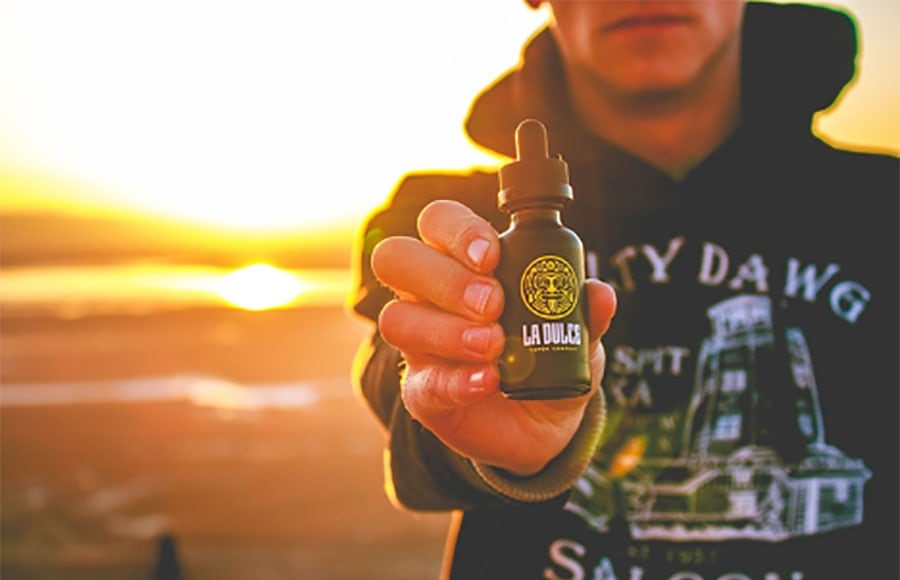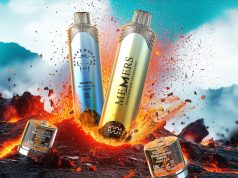If you’re about to purchase a vape kit for the first time, it’s obvious that you have a lot of questions concerning e-liquid as you look for the best e-liquid in 2021. It can be tedious and challenging to get the best quality e-liquid as there are many varieties.
With all these flavorings and new terms to understand, some individuals may have a hard time learning all there is about e-juice. But worry no more, we have compiled this guide to answer all your questions and clear up any doubts.
Whether it’s e-juice, e-liquid, or vape juice, here is everything you should know about it.
1. What Is E-Juice?
Vape juice is a liquid heated using e-cigarettes to produce vapor. The e-liquids contain vape substance, nicotine and flavor additives. However, you can find some e-liquids without nicotine.
2. Does E-Juice Expire?
Every vape juice bottle comes with an expiry date. Most of their expiry date is between one and two years because it contains VG, PG, and nicotine with a shelf life of two years. Once the set date has passed, there is no guarantee of quality.
Vape juice isn’t friendly with oxygen, sunlight, or heat. Your e-liquid’s longevity depends on how far you keep it from those conditions. Vape juice changes when nicotine is oxidized and the flavorings start to degrade.
3. Why Is E-Liquid Turning Brown?
Vape juice changes to dark brown as a result of oxidation. Nicotine reacts when exposed to sunlight or oxygen, which turns the vape juice brown. These changes in your e-juice are not toxic and will not interfere with the flavor.
4. What Goes Into E-Liquid?
E-liquid is produced by mixing the vape substance, VG (vegetable glycerin), PG (propylene glycol), nicotine, flavorings, and water. Flavorings added to the vape juice are similar to those added in medications, salad dressing, and ketchup.
5. What Is VG?
Vegetable glycerin is a transparent fluid obtained from plant oils like coconut, palm, and soy oils. It thickens the vape juice and produces thick clouds.
6. Is It Safe Vaping Vegetable Glycerin?
Because it’s dense, vape juices with 100% VG are hard to turn into vapor. A suitable PG/VG ratio is important. VG is found in various common foods and often considered safe for consumption.
7. What Is PG?
Propylene glycol is a clear liquid that is soluble in water. Research shows it’s a synthetic additive made through mixing water with propylene oxide. The propylene oxide is obtained from products of petroleum. It is used as an emollient in different formulas, as a preservative and solvent.
8. How Much Nicotine Does Vape Juice Contain?
This is a highly pressing question about vape juice that confuses new vape users. Individuals want to know the amount of nicotine in e-juice and if such amount can help them quit smoking for those addicted to smoking cigarettes. E-cigarettes contain up to 15 mg of nicotine, while a single cigarette has 6 mg to 28 mg of nicotine.
9. How Do I Choose The Right Nicotine Strength?
This is a key step to kissing cigarettes goodbye. Although e-juice contains nicotine, cigarettes give you another level of experience as it has other chemicals. It’s worth noting that nicotine in tobacco smoke is very addictive and is what makes cigarette smokers crave it. So choose the right nicotine level to have the best vaping experience.
10. Should You Smoke or Vape?
Smoke from cigarettes has over 4000 chemicals, while e-liquid consists of nicotine and VG/PG combination. These ingredients are safe for ingestion and are meant for producing the best vapor. To give you an idea vaping is considered 95% less harmful than smoking by the British health department.
11. Which VG/PG Ratio Is Best for E-Liquid?
A 40:60 mixture of PG and VG in a vape juice can release a great flavor and vapor. You can also choose to use your own PG/VG ratios for your better experience. The optimum mix is 30PG/70VG for many vapers because it offers a great flavor, a better throat hit, and good production of vapor.
12. Which Is The Safest E-Liquid to Use?
If you are looking for a safe vape juice, you should use the unflavored options. But if you don’t like the unflavored e-juice, going for a diacetyl-free vape juice is the other possible safest option.
13. How Does E-Cigarettes Work?

The e-cigarette uses modern technology with a replaceable cartridge and rechargeable lithium battery. When you power it on and draw , the e-liquid is heated and turned into vapor that you take in.
14. Can I Add Honey to My Vape?
No, you should not add honey to a vaporizer instead of vegetable glycerin or e-liquid. Honey is a lot thicker and could damage the atomizer.
15. Are Vape Flavors More Dangerous?
Although most flavours are safe in food usage, some may be harmful in vaping. Serious manufacturers run lab analysis in order to choose the most stable molecules in their flavorings, that’s why we recommend to buy e-liquids from famous companies which have analytical instruments in their facilities.
16. What are The Benefits of Vaping?
The benefits of vaping e-juice exceed the drawbacks. These pros include;
- Affordability
- Large varieties of flavors
- Flexibility and fun
- No nasty odors

17. What Is Steeping in E-Juice?
This is the process of allowing the vape juice to settle for some time for the flavors to grow completely. Most e-liquids get better taste once they steep.
18. Why Do I Cough After Vaping?
It’s normal to cough after taking vape juice, especially if you are vaping for the first time. One of the main reasons for coughing is the high setting of the vape. A high percentage of nicotine can also cause coughing.
19. What Does Vegetable Glycerin Do to My Lungs?
VG inhalation toxicity is considered very low due to low volatility. Aerial toxicity was studied in rats. The only effect observed was a thickening of the mucous membrane of the trachea following high-dose exposure, which is a form of protection against chemical irritants (Renne et al, 1992).
When e-liquids are overheated (temperature above 350°C), glycerol can be degraded, which can lead to the formation of undesirable compounds: aldehydes, such as acrolein, acetaldehyde and formaldehyde.
Modern devices limit this risk of “dry hit” with an increase in the wick feed capacity that allows sufficient supply of e-liquid to the coil. This in order to avoid the formation of these aldehydes. In all cases, it is essential to respect the manufacturers’ recommendations for use.
20. Does The FDA control e-Cigarettes?
Yes. FDA started regulating e-liquids and e-cigarettes in May 2016. They are controlled like tobacco products.








